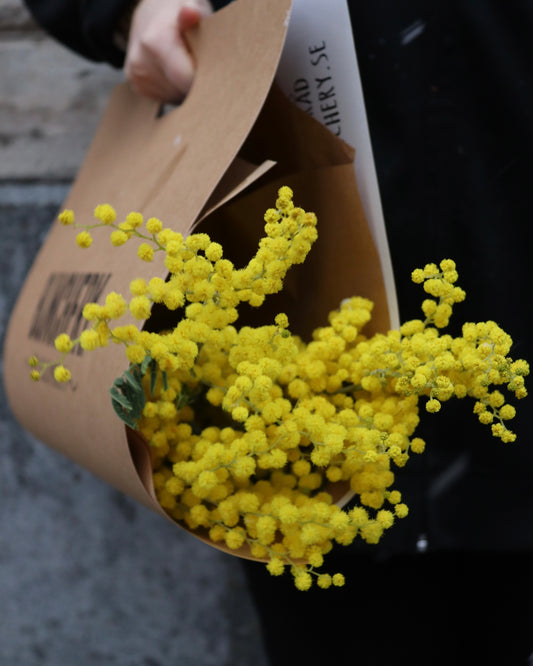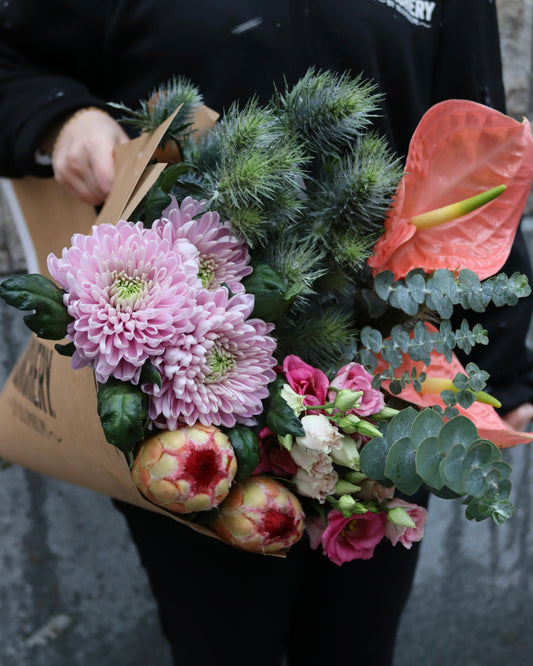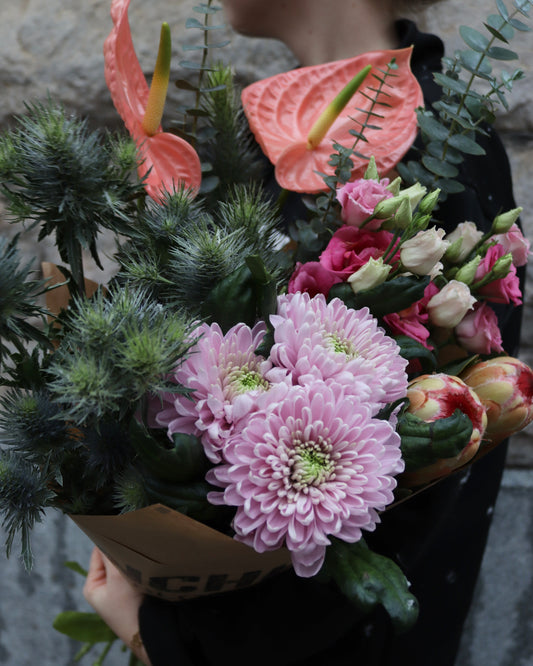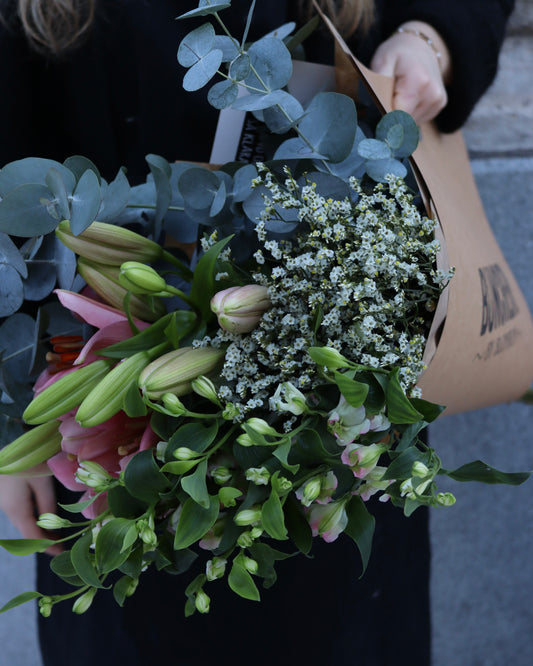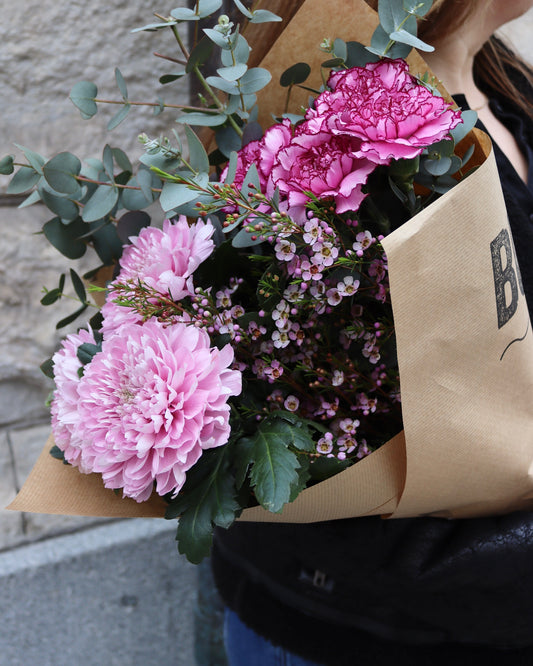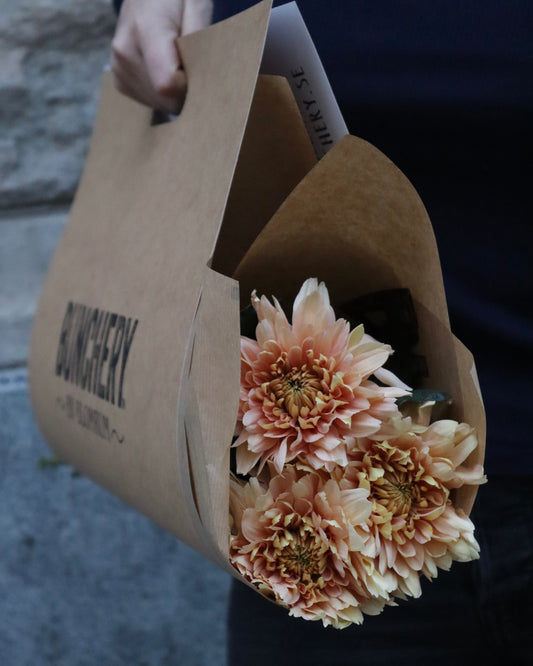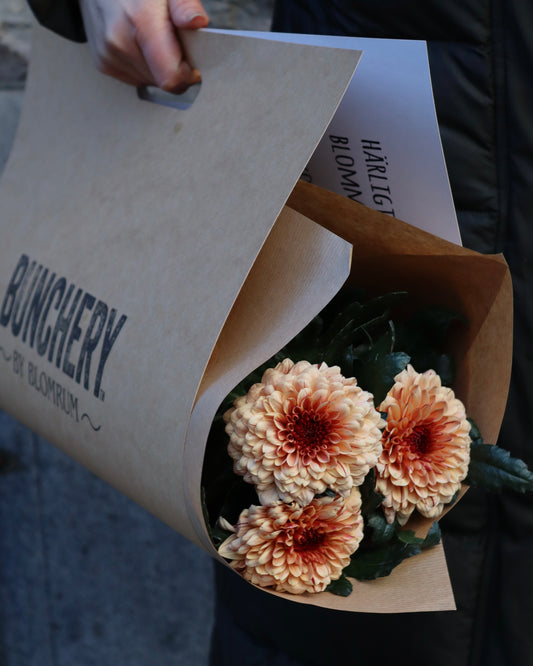
-
Flower Care
It is important to take care of the beauties so that they last for a long time. We’ll start with the most important things:
• Always use a clean-up vase
• Remove all leaves that will end up in water
• Use a knife when cutting – not scissors
• Add flower food to the water
• Do not place the flowers in direct sunlight or by a heat source
• Change water every other day
• Most flowers are happiest if you cut a diagonal, long cut with a sharp knife and place them in lukewarm water.
Flowers that have very hard / woody stalks thrive best in warm/ hot water. Flowers in this group include for example siren, hydrangea and roses with a strong stalk. Place them with A LOT of water in the vase.
Flowers grown from bulbs or leeks with a soft stalk: make a short cut and place in cold water. Most varieties in this group prefer to only have some water in the vase. Examples of these beauties: tulips, anemones, calla lillies, ranunculus and hyacinths.
-
Tips
If the bag of nutrition, for some reason, did not make it all the way home, here’s the recipe for homemade flower food:
- 1 liter of water
- 2 teaspoons of 12% vinegar
- 3-15 sugar cubes
The number of sugar cubes depends on which flowers it’s for: the harder the stalk, the more sugar cubes. The sugar gives the flowers nutrition and the vinegar reduces the pH-värdet, reduces the bacteria in the water.
To get sword lilies to bloom up to the top – pinch the top part of the flower when you place it in the vase.
Do you want to put daffodils and nacisses together with other types of flowers – let the primadonnas draw water in a separate vase first for about an hour. Then all the flowers in the vase will live longer!
If there are any small buds on the roses you bought – remove these – they take power from the bud and makes it harder for the flower to bloom.
Let the “feet” on the hyacinths remain – cut only a short cut at the bottom of the stalk. The “foot” makes it easier for the flowers to draw water.
Some of our most popular flowers!
-
Mimosa - Acacia
Regular price 155 SEKRegular priceUnit price per -
Bunchery´s Choice- rosa
Regular price 995 SEKRegular priceUnit price per -
Bunchery´s Choice- rosa
Regular price From 395 SEKRegular priceUnit price per -
Bollkrysantemum
Regular price 195 SEKRegular priceUnit price per

